Reimagining travel: Thailand tourism after the COVID-19 pandemic
Thailand’s economy is reliant on international tourism, a once-flourishing sector that has been impacted by pandemic restrictions. But there have been continual government efforts to boost domestic travel, and measures to support returning international demand after Thailand began reopening to vaccinated international travelers from 63 countries on November 1, 2021. 1 Pasika Khernamnuoy and Katie Silver, “Thailand reopens to vaccinated tourists from over 60 nations,” BBC, November 1 2021, bbc.com. Even as the world addresses emerging variants of the virus, Thailand’s lessons can act as a guide for other tourism-dependent countries facing similar dilemmas as they prepare for the resurgence of international travel.

A heavy blow, adjustments needed to support recovery
In 2019, Thailand ranked eighth globally in international tourist arrivals, with China being a key source market. 2 United Nations World Tourism Organization (UNWTO). Thailand recorded a high of 40 million visitors in 2019, with the top three spending categories for inbound visitors that year being in accommodation (28 percent), shopping (24 percent of spending), and food and beverages (21 percent). 3 “Summary of tourism income and expenses from foreign tourists entering Thailand in 2019,” Ministry of Tourism & Sports, October 28, 2020, mots.go.th. Furthermore, the Thai tourism sector created 36 million jobs between 2014 and 2019. 4 “Dashboard SME big data,” Office of Small and Medium Enterprises Promotion, accessed October 2021, sme.go.th.
Unfortunately, the pandemic and related restrictions have hit travel particularly hard, as international travel plunged. Passengers on international flights to Thailand dropped by 95 percent in September 2021, compared to the previous year. Hotels, in turn, only filled 9 percent of their rooms (Exhibit 1).
This decline in visitors had an outsize impact on tourism spending, as international travelers spent significantly more than their local counterparts (Exhibit 2). For instance, in 2019, international travelers made up 33 percent of overall travelers in Thailand yet accounted for almost 60 percent of all tourism spending—international tourists spent $1,543 per traveler on average, compared to $152 by domestic travelers. 5 “Tourism statistics 2019,” Ministry of Tourism & Sports, accessed October 2021, mots.go.th. This drop in expenditure undoubtedly caused a ripple effect on Thailand’s food and beverage retail industries, which include 1.2 million small and medium-size enterprises (SMEs). 6 “How to start business,” Office of Small and Medium Enterprises Promotion, accessed October 2021, sme.go.th.
Recovery appears to be on the horizon for Thailand. Assuming virus recurrence, slow long-term growth, muted world recovery, and minimal changes to global tourism strategies, Thailand’s tourism sector could only recover to pre-crisis levels by 2024.
Given that Thailand’s GDP relies significantly on foreign tourism income, the domestic tourism market alone is not sufficient to bring the nation’s tourism revenue back to 2019 figures; the sector’s recovery would depend on a resurgence in international travel (Exhibit 3). Globally, this recovery scenario would likely reshape the landscape of the world’s travel industry and create a strong imperative for both the public and private sectors to act to ensure the industry’s survival.
Efforts to stimulate tourism
Thailand has deployed various efforts to compensate for the loss of inbound tourism. Given that for most of the first quarter of 2020, Thailand saw less than 1,000 daily COVID-19 cases nationwide, with cases not rising above 4,000 until November 2020, domestic tourism was still a viable option for travelers. The Thai government’s attempt to boost domestic travel took the form of providing subsidies for hotel stays and flights for travelers. The government also rolled out measures to stimulate international travel to Thailand’s beach destinations and attract high-end travelers from international markets.
Travel together—stimulating domestic tourism
In August 2020, the Thai government launched the Rao Tiew Duay Gun (We Travel Together) program, where it set aside a budget of $640 million to help boost domestic tourism. 7 “Thailand approves domestic tourism package worth 22.4 billion baht,” Tourism Authority of Thailand Newsroom, June 17, 2020, tatnews.org.
The government subsidized a total of six million nights of hotel accommodation at 40 percent of normal room rates. The subsidy was capped at 3,000 baht ($100) per night for up to five nights. Subsidies for other services, including food, were capped at 600 baht ($20) per room per night. This subsidy was initially limited to facilities outside tourists’ home provinces, but that restriction was lifted in the second phase of the rollout in December 2020. In addition, domestic tourists traveling by air would qualify for a government refund of 40 percent of the ticket price. This was capped at 1,000 baht ($32) per seat, with a quota of 2 million seats.
The program reached its total quota of six million hotel-room nights in February 2021, seven months after its launch. 8 “FPO reveals the money we travel together, 20,000 million,” Bangkok Business News , January 4, 2021, bangkokbiznews.com; “‘We travel together’ the parade has already reserved 6 million rights. But there are still 1.35 million rights left!” Bangkok Business News , February 8, 2021, bangkokbiznews.com. During that time, at least $1 billion had been added to the Thai economy. 9 “NESDB-TAT has not yet knocked on ‘we travel together, phase 3,’” Thai PBS News , March 16, 2021, news.thaipbs.or.th.
Many operators grasped this opportunity, shifted their focus to the domestic market, and attracted local travelers by promoting flights and hotels in collaboration with the We Travel Together campaign. Destinations that once served mainly international visitors welcomed more local travelers, which has helped their economies wade through this difficult period. Many luxury hotels offered deep discounts and attractive promotions to capture the medium- to high-spend domestic-tourist segment.
These efforts to stimulate domestic travel were temporarily paused as COVID-19 cases reached a new high in July 2021. Domestic air travel in and out of red zones, including Bangkok, was banned during July to September 2021 in response to the nation’s effort to control the spread of the Delta variant. 10 “Domestic flight bans in force,” Bangkok Post , July 21, 2021, bangkokpost.com. Phase three of the We Travel Together campaign was paused during the same period, but resumed in October 2021.
Bringing back international travelers with the ‘sandbox’ approach
Despite promotional efforts for domestic travel, Thailand’s total revenue from domestic travel still saw a significant dip. The country’s revenue from domestic travel dropped from $34.5 billion to $15.4 billion in 2020. An increase in domestic spending alone would not compensate for the impact of the pandemic on the Thai economy. The country has largely been dependent on international markets, which represented about $62 billion or 60 percent of total tourism spend in 2019. 11 “Tourism statistics 2019,” Ministry of Tourism & Sports, accessed October 2021, mots.go.th.
In response, Thailand launched the “Phuket Sandbox” in July 2021, an effort to recapture demand from international travelers. The initiative offered fully vaccinated travelers (between 14 days and one year before their travel date) exemption from quarantine, provided they remain in Phuket for at least 14 days before traveling to other parts of Thailand. 12 “General information—Phuket Sandbox,” Tourism Authority of Thailand Newsroom, October 1, 2021, tatnews.org. Additionally, travelers’ stay in Phuket was restricted to accommodation establishments that have been certified by the Safety & Health Administration of the Thai government. Visitors staying in Phuket for less than 14 days were permitted to leave Phuket only if their destination was outside of Thailand.
The model hoped to draw visitors during the year-end season in Asia, Europe, and America—all key origin markets for Thailand. Several other reopening plans followed, including the “Samui Plus” and “Andaman Sandbox” plans. 13 “Samui Plus plan to generate B180m,” Bangkok Post , July 18, 2021, bangkokpost.com; “‘Adaman Sandbox’ next on govt agenda,” Bangkok Post , July 21, 2021, bangkokpost.com. Together, the schemes created a network of reopened destinations, which hoped to position Thailand as an attractive destination for international and domestic travelers alike.
The economic uplift from the Phuket Sandbox were moderate. In the period from July 1 to August 31, Phuket welcomed about 26,400 visitors, who were estimated to have spent at least $48.8 million while staying on the resort island (Exhibit 4). 14 “Phuket Sandbox generates B1,634m in two months,” Bangkok Post , September 5, 2021, bangkokpost.com.
A nationwide rise in COVID-19 infection rates in the same period meant that the government had to reconsider social distancing and other measures to minimize risk to visitors.
In any case, Thailand has gathered its learnings from the “sandbox” approach and proceeded to reopen the country to receive international travelers. As of November 1, 2021, the Thai government commenced a phased reopening of the country, allowing fully vaccinated tourists from 63 low-risk countries to visit with one day of quarantine, provided they pass a COVID-19 test upon arrival. The government has also replaced the slow-paced Certificate of Entry (COE) system with the Thailand Pass System, in an effort to make the documentation process of travelers entering Thailand more efficient than the COE application. 15 “Thailand pass,” ThaiEmbassy.com, accessed on November 1, 2021, thaiembassy.com.
The program also expanded the number of provinces open to international visitors to 17, including major tourism destinations such as Bangkok and Chiang Mai. Subject to readiness, additional major provinces are expected to reopen from December 2021 onwards. To ensure visitor safety, some COVID-19 measures remain in place, although most businesses have been allowed to reopen and nighttime curfews have been lifted in almost every province. The reopening has welcomed tourists globally, with top visitors coming from Thailand’s key source markets—the United States, Germany, and the United Kingdom (Exhibit 5).
Attracting ‘quality’ travelers, with an eye on new markets
Pre-COVID-19, China was one of the main contributors to Thailand’s tourism income, accounting for more than 27 percent of 2019 tourism receipts. 16 “Tourism statistics 2019,” Ministry of Tourism & Sports, accessed October 2021, mots.go.th. Given the current prudent approach of the Chinese government toward international travel, the road of return for Chinese visitors to Thailand will be a long one. China’s international-flight seat capacity and passenger numbers remain down by 95 percent compared to pre-COVID-19 levels, and stringent public-health measures for international travel remain in place. Thailand, therefore, needs to reimagine its strategy and try to capture new sources of international travelers in markets where there are more rapid recoveries of international travel demand.
The situation may change rapidly, particularly in these volatile times; closely monitoring the revival of these top source markets, particularly around the country’s stance towards viral control measures, will help industry players plan their recovery efforts and capture untapped value.
Recognizing these shifting traveler trends, and the resilient nature of premium traveler groups, the Thai government is striving to attract “quality” travelers from these source countries. Measures include revisiting and relaxing certain regulations—such as yachting regulations and taxes on personal belongings and luxury goods—to improve and stimulate the premium travel experience.
Taking this a step further, the Thai government is preparing to launch a long-term residence program to attract foreigners to the country through new Long-Term Resident (LTR) visas (up to ten years), tax and investment incentives, foreigners’ residential property ownership relaxations, and more. The program will target four key personas: the wealthy global citizen, the wealthy retiree, the work-from-Thailand professional, and the high-skilled professional. The country’s ambition is to welcome over one million of these target personas and generate over 1 trillion baht in domestic spending in the next five years, beginning in 2022.
Emerging from the storm: Actions for travel and tourism
Thailand has put innovative measures in place to help its vitally important travel and tourism sector wade through the COVID-19 crisis. As new variants of the coronavirus emerge, health and safety should remain the foremost priority as countries contemplate their travel programs. Once it is safe to do so, there are actions that stakeholders can take to steer into and thrive within the next normal.
Adjust offerings and pricing strategy to meet market needs. Hotels, tour operators, restaurants, and transport providers could look to explore opportunities to offer services and products that meet new travel demands.
Bundle products, such as hotel and flights, offer upselling and cross-selling opportunities as well as a diversified revenue stream.
Travel companies could also devise and deploy targeted pricing strategies to drive long-term loyalty and stickiness for when international travel fully returns. Given the phased reopening of popular provinces in Thailand, and the inclusion of more visitors from select countries on a quarantine-exemption list, travel companies can leverage data on traveler behaviors to set the right prices and conduct targeted campaigns by country of origin and destination.
Explore opportunities within the mass-affluent traveler segment. Focusing on premium travel experiences may be a viable strategy in some markets, but it may have limited impact in Thailand. Given that the top three inbound visitor-spending categories in 2019 were shopping, accommodations, and food, targeting the high-end market would only benefit a small segment of travel companies and would not contribute to the country’s economic recovery across all relevant sectors.
By promoting more differentiated travel experiences and attractions such as ecotourism and cultural tourism, which are naturally location based and sought after by younger mass-affluent travelers, operators could contribute to greater aviation and transportation use in Thailand.
Form partnerships across the travel ecosystem. As a result of the government’s We Travel Together program, which subsidizes travel through a digital redemption mechanism (the Pao Tang app), the country has seen an estimated 30 to 40 million users join and use the platform. 17 Krung Thai Bank equity research, April 2021. This has created an opportunity for domestic consumer data to be collected and analyzed to provide more personalized tourism offerings that consumers are more likely to consider spending on.
Taking this a step further, tour operators, restaurants, and shopping malls might link up, creating a connected ecosystem where a traveler could be strategically engaged through multiple personalized services, products, and loyalty programs along their journeys.
Expand the network of destinations. There is an opportunity to offer travelers a wider variety of destinations in first- and second-tier cities, such as Nakhon Si Thammarat, Chiang Rai, Nakhon Nayok, Ratchaburi, and Loei. These locations have been able to sustain visitor numbers at a relatively low rate of decline, largely due to domestic travelers looking for new places to visit during international travel restrictions.
With a boost in promotion and appropriate infrastructure investment, tourism will not only contribute to the survival of the industry in these cities, but it could also lead to enduring tourist appeal that extends beyond domestic traveler groups, especially with the gradual return of international visitors. For example, the Tourism Authority of Thailand is collaborating with airlines to offer direct flights to alternative second-tier tourism destinations.
Leverage digital to connect, attract, and retain travelers. Travel companies can digitalize the customer journey from check-in through payment, including the provision of maps and information. Traveler preferences can be tracked in real time to design better and more relevant offerings, while digital booking channels can target different customer segments. Digital marketing can also entice visitors to return and to share their experiences on social media.
For instance, the Tourism Council of Thailand is working with Singapore-based IsWhere to deploy a digital-marketing platform for tourism business operators to better connect and engage with a potentially sizeable number of domestic and international travelers; the platform’s prior partnership with a major tech company has enabled it to reach 600 million digital customers worldwide.
Reimagine support needed by industry players. In the short term, industry players would need stimulus, support, and guidance on health and safety policies from the government. In the medium term, small and medium-size players would benefit from the government’s support in adjusting to online travel services and digital marketing, such as a one-stop digital platform to connect industry players with international travelers.
As such, the Tourism Authority of Thailand announced its plan to establish a private digital firm to work on creating a digital infrastructure for tourism, utilize big data in the industry, and potentially introduce blockchain-based e-vouchers and nonfungible tokens to provide tourism operators with more options for reaching travelers online and offline.
In the wake of the COVID-19 pandemic, tourism recovery in Thailand will be gradual and complex and requires varied strategies from both industry and government. As the world eagerly prepares for the eventual revival of international travel, Thailand and other countries can draw important lessons from its experience during this difficult interim period.
Steve Saxon is a partner in McKinsey’s Shenzhen office; Jan Sodprasert is a partner in the Bangkok office, where Voramon Sucharitakul is an associate partner.
The authors wish to thank Margaux Constantin , Kamila Dolinska, Steffen Köpke, Alan Laichareonsup, Jason Li, Georgie Songsantiphap, and Jackey Yu for their contributions to this article.
Explore a career with us
Related articles.
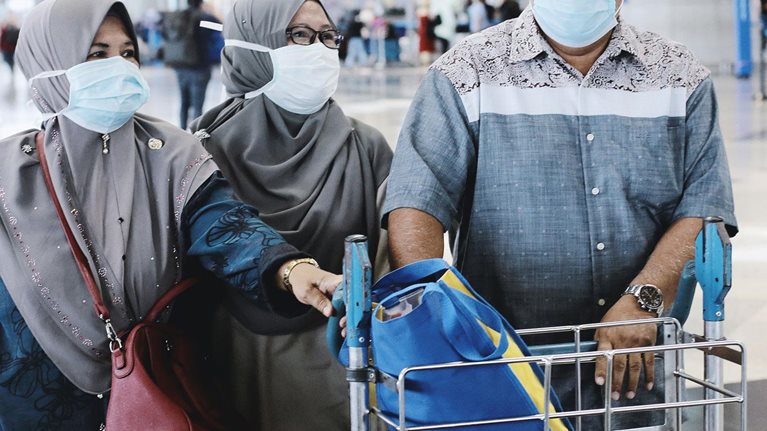
Reimagining the $9 trillion tourism economy—what will it take?

Make it better, not just safer: The opportunity to reinvent travel
A new approach in tracking travel demand

Tourism in Thailand- A Detailed Overview
Disclaimer: Some posts on Tourism Teacher may contain affiliate links. If you appreciate this content, you can show your support by making a purchase through these links or by buying me a coffee . Thank you for your support!
Tourism in Thailand is BIG business. So big in fact, that the money generated from tourism is an integral part of the Thai economy. But why is tourism in Thailand so important, how does the tourism industry operate here and why do so many tourists visit Thailand each year? Keep reading to learn all about tourism in Thailand .
Tourism in Thailand- What’s it all about?
The geography of thailand, the tourism industry in thailand , cultural attractions, beaches and islands, adventure activities, health and wellness, affordable cost of living, cultural tourism, beach tourism, adventure tourism, medical tourism, food tourism, shopping tourism, wellness tourism, sex tourism, most popular tourist attractions in thailand, types of tourists in thailand, crime and safety in thailand, sustainability in thailand, required budget to visit thailand, respect the culture, be mindful of the weather, watch out for scams, eat local food, practice good etiquette, be mindful of your belongings, respect the environment, interesting facts about thailand, faqs about tourism in thailand, tourism in thailand: to conclude.
It is no secret that Thailand is one of my favourite destinations in the world. The weather, the natural environment, the culture, the people, the hustle and bustle of the cities, the food- are all major draws when it comes to tourism in Thailand, not only for me, but for thousands of tourists each year. As a result, tourism in Thailand is BIG business.
In this article I will delve into the tourism industry in Thailand, taking a look at what makes this tourist destination so appealing and how this impacts the country. Ready to learn more about tourism in Thailand? Read on!

The success of tourism in Thailand can in part be attributed to the geography of the country. Thailand is a country located in Southeast Asia, bordering Myanmar to the north and west, Laos to the northeast, Cambodia to the southeast, and Malaysia to the south. Thailand is the world’s 51st largest country by land area and covers an area of approximately 513,000 square kilometres.
The geography of Thailand is characterised by several distinct regions. In the north, there are mountainous areas, including the Shan Hills and the Thanon Thong Chai Range, which run along the border with Myanmar. The highest peak in Thailand, Doi Inthanon , is located in this region.
To the east of the mountains lies the Khorat Plateau , a large flat region that covers most of northeastern Thailand. The plateau is mostly agricultural and is known for it’s production of rice and other crops.
In the central region of Thailand, the Chao Phraya River basin dominates the landscape. This is the most populous region of Thailand and includes the capital city of Bangkok. The area is known for its fertile soil, which supports agriculture and industry.
The southern region of Thailand is known for its long, narrow peninsula that extends into the Malay Peninsula. The region includes numerous islands and is home to some of Thailand’s most popular beaches and tourist destinations that contribute significantly to tourism in Thailand.
Thailand has a tropical climate, with temperatures generally ranging from 20 to 35 degrees Celsius (68 to 95 degrees Fahrenheit) throughout the year. The country is also prone to monsoons and other weather patterns, which can bring heavy rainfall and flooding in some areas.

The tourism industry in Thailand is a significant contributor to the country’s economy, accounting for around 12% of the country’s gross domestic product (GDP). Here are some statistics on the tourism industry in Thailand:
- In 2019, Thailand welcomed 39.8 million international tourists, generating revenue of 1.93 trillion baht (approximately 63 billion US dollars).
- The COVID-19 pandemic severely impacted the tourism industry in Thailand, with tourist arrivals dropping by 83.2% in 2020 to 6.7 million, and revenue falling to 332 billion baht (approximately 10.7 billion US dollars).
- The top five source markets for Thailand’s tourism industry are China , Malaysia, India , South Korea, and Japan .
- Bangkok is the most visited city in Thailand, with over 22 million international arrivals in 2019. Other popular destinations include Phuket, Pattaya, and Chiang Mai.
- Bangkok, the capital city of Thailand, is one of the most popular tourist destinations in the world. The city is known for its vibrant street life, ornate shrines and temples, and delicious street food.
- The tourism industry in Thailand employs over 3 million people, including those working in hotels, restaurants, transportation, and other tourism-related businesses.
- The tourism industry in Thailand has been shifting towards more sustainable practices in recent years. In 2019, Thailand was ranked 32nd out of 190 countries in the World Tourism Organisation’s Sustainable Tourism Index.
- The Thai government has set a target of attracting 100 million international tourists and generating 5 trillion baht ($166 billion USD) in revenue by 2024. To achieve this, the government has introduced various measures to promote tourism, such as visa fee waivers, tax incentives for hotels and airlines, and the development of new tourism infrastructure.

Why people travel to Thailand
Tourism in Thailand is popular because of the wide variety of attractions and activities that are available here. There are several reasons why people are motivated to travel to Thailand. Here are some of the most common ones:
Thailand is known for its rich and vibrant culture , including ancient temples, palaces, and traditional Thai performances. The Thai culture is admired by many, with people being extremely friendly, welcoming and kind.
Thailand boasts some of the most beautiful beaches and islands in the world, such as Phuket, Koh Samui, and Phi Phi Island, which offer stunning scenery and water sports activities. Diving here offers some of the best opportunities in the world.

There are plenty of adventure activities to be enjoyed in Thailand, such as hiking, rock climbing, zip-lining, and rafting. Tourism in Thailand is perfect for the adventure seeker!
Thai cuisine is famous worldwide for its diverse flavours and unique combinations of spices, herbs, and ingredients. Food tourism is very popular here, but beware- the food is spicier than most people expect!
Thailand offers a wide range of shopping experiences, from traditional markets to modern shopping malls, where visitors can buy everything from souvenirs to high-end luxury goods. The floating markets are a lot of fun too!
Thailand has a vibrant nightlife scene, particularly in cities like Bangkok, with a variety of bars, nightclubs, and entertainment venues.
Thailand has become a popular destination for those seeking health and wellness retreats , with a range of spa and yoga retreats on offer. Massages in Thailand are cheaper than in most parts of the world and experiencing a Thai massage has almost become a right of passage for tourists visiting Thailand.
Thailand offers relatively affordable travel costs compared to other popular tourist destinations, making it an attractive option for budget-conscious travellers.

Popular types of tourism in Thailand
Thailand is a popular tourist destination with a diverse range of attractions catering to different types of tourists. Here are some of the most popular types of tourism in Thailand:
Thailand has a rich cultural heritage, and tourists often visit the country to explore its ancient temples, palaces, and museums. Some of the most popular cultural attractions include the Grand Palace and Wat Phra Kaew in Bangkok, and the ancient city of Ayutthaya.
Thailand is famous for its beautiful beaches and islands , with Phuket, Koh Samui, and Phi Phi Island among the most popular destinations. Tourists can enjoy a range of water sports and activities, such as snorkelling, diving, and island hopping.
Thailand offers a range of adventure activities, including trekking, rock climbing, white-water rafting, and zip-lining. The northern region of Chiang Mai is particularly popular for adventure tourism.
Thailand has become a popular destination for medical tourism, with a range of hospitals and clinics offering medical procedures at a lower cost than in many Western countries. Many people choose to travel here for cosmetic surgery, dental treatment as well as other medical aspects.

Thai cuisine is famous worldwide, and tourists often visit Thailand to experience the country’s diverse and flavourful cuisine. Popular foodie destinations include Bangkok’s street food markets and Chiang Mai’s night bazaar.
Thailand is a shopper’s paradise, with a range of markets and shopping malls catering to all budgets. Tourists can buy everything from souvenirs and handicrafts to luxury goods and designer fashion.
Thailand has a diverse range of natural attractions, including national parks, such as Khao Yai and Khao Sok , wildlife sanctuaries, and marine reserves. Ecotourists can explore Thailand’s natural beauty and wildlife through activities such as jungle treks, elephant rides, and bird watching.
Thailand offers a range of spa and wellness retreats, catering to tourists seeking relaxation and rejuvenation. Popular wellness destinations include the islands of Koh Samui and Phuket.
Sex tourism in Thailand has been a controversial issue for decades. The country is known for its red-light districts, such as Patpong and Soi Cowboy in Bangkok, and Pattaya’s Walking Street. These areas are infamous for their sex industry, which includes brothels, bars, and massage parlors.
While prostitution is technically illegal in Thailand, it is widely tolerated, and the sex industry is estimated to generate billions of dollars in revenue each year. However, the government has taken steps in recent years to crack down on sex tourism and to promote more socially responsible tourism practices, which I will discuss further shortly.

Now that we understand a little bit more about tourism in Thailand and the different types of tourism found here, lets take a look at some of the most popular tourist attractions that make tourism in Thailand such big business.
- The Grand Palace and Wat Phra Kaew in Bangkok: The Grand Palace is a spectacular complex of buildings and temples that served as the official residence of the Kings of Siam. Wat Phra Kaew, also known as the Temple of the Emerald Buddha, is located within the palace grounds and is considered the most sacred temple in Thailand.
- The ancient city of Ayutthaya : Ayutthaya was the capital of Siam from the 14th to the 18th century and is now a UNESCO World Heritage Site. Visitors can explore the ruins of ancient temples and palaces, including the famous Wat Mahathat, with its iconic Buddha head embedded in a tree.
- Phuket : Phuket is a popular destination for beach lovers, with beautiful beaches such as Patong, Kata, and Karon. Visitors can also enjoy a range of water sports and activities, such as snorkelling, diving, and island hopping.
- Chiang Mai : Chiang Mai is a city in northern Thailand famous for its temples, night markets, and adventure activities such as trekking and white-water rafting. Popular attractions include the Wat Phra That Doi Suthep temple and the Sunday Walking Street Market.
- Sukhothai Historical Park : Sukhothai was the first capital of Siam and is now a UNESCO World Heritage Site. The historical park contains the ruins of temples and palaces dating back to the 13th and 14th centuries.
- The Bridge over the River Kwai: The Bridge over the River Kwai is a famous landmark and a reminder of the suffering of Allied prisoners of war and Asian forced labourers during World War II. Visitors can learn about the history of the bridge and take a train ride along the scenic River Kwai.
- Koh Samui: Koh Samui is a popular island destination in southern Thailand, with beautiful beaches, lush jungles, and luxury resorts. Visitors can enjoy a range of activities, such as snorkelling, diving, and island hopping.
- The Floating Markets: The floating markets are a unique feature of Thai culture, where vendors sell their goods from boats on the canals. Popular floating markets include Damnoen Saduak and Amphawa, both located outside of Bangkok.
- Phi Phi Islands: Phi Phi Islands are a group of islands in southern Thailand, known for their white sandy beaches, crystal clear waters, and stunning rock formations. Visitors can enjoy a range of activities, such as snorkeling, diving, and island hopping.
- Khao Yai National Park: Khao Yai National Park is a UNESCO World Heritage Site and one of the largest national parks in Thailand. Visitors can explore the park’s diverse flora and fauna, including elephants, tigers, and gibbons, and enjoy activities such as hiking and bird watching.
Tourism in Thailand is what it is because of the people who choose to visit this beautiful country. Thailand is a popular tourist destination that attracts a diverse range of tourists from around the world. Here are some of the types of tourists who travel to Thailand:
- Backpackers : Thailand is a popular destination for backpackers, especially those on a budget. Backpackers often travel to Thailand for its affordable accommodation , food, and activities, as well as its vibrant nightlife and beach scene.
- Luxury travellers: Thailand also attracts luxury travellers who are looking for high-end accommodation, fine dining, and exclusive experiences. Thailand has a range of luxury resorts and spas, as well as private islands and yachts that cater to the luxury travel market.
- Families : Thailand is a family-friendly destination, with a range of activities and attractions that cater to all ages. Families often travel to Thailand for its beaches, water parks, and theme parks, as well as cultural attractions such as temples and museums.
- Solo travellers: Thailand is also a popular destination for solo travellers, who come to explore the country’s culture and natural beauty, as well as to meet other travellers. Solo travellers can join tours or stay in hostels, where they can meet other travellers and make new friends.
- Adventure travellers: Thailand offers a range of adventure activities, such as trekking, rock climbing, and white-water rafting, which attract adventure travellers looking for a challenge. The northern region of Chiang Mai is particularly popular for adventure tourism.
- Medical tourists: Thailand has become a popular destination for medical tourism, attracting patients from around the world who come for medical procedures at a lower cost than in many Western countries.
- Digital nomads: Thailand is also a popular destination for digital nomads , who come to work remotely while enjoying the country’s natural beauty and cultural attractions. Thailand has a range of coworking spaces and cafes with reliable internet connections.
- Foodies : Thailand is known for its flavorful cuisine, and foodies often travel to Thailand to explore its diverse food scene. Bangkok’s street food markets and Chiang Mai’s night bazaar are popular destinations for foodies looking to sample local dishes.
- Culture enthusiasts : Thailand has a rich cultural heritage, and culture enthusiasts often travel to Thailand to explore its ancient temples, palaces, and museums. Popular cultural attractions include the Grand Palace and Wat Phra Kaew in Bangkok, and the ancient city of Ayutthaya.
- Sex tourists: There are many people who visit Thailand for its infamous sex industry. They may be in search of a ‘Thai bride’, an erotic table-top dance or prostitution.
Is tourism in Thailand safe? The answer is yes- Thailand is generally a safe country for tourists, with a low crime rate. However, as with any destination, tourists should be aware of the potential for crime and take precautions to ensure their safety. Here are some things to keep in mind:
- Petty theft : Petty theft, such as pickpocketing and purse-snatching, can occur in crowded areas, such as markets and tourist sites. Travellers should keep their valuables secure and be aware of their surroundings.
- Scams : Tourist scams are common in Thailand, particularly in tourist areas. These can include tuk-tuk and taxi drivers overcharging, fake tour operators, and scams involving gemstones or tailor-made suits. Travellers should research reputable operators and be wary of unsolicited offers.
- Political unrest : Thailand has experienced political unrest in recent years, with protests and occasional violence in Bangkok and other cities. Yopu should avoid political demonstrations and stay up to date with local news.
- Natural disasters: Thailand is prone to natural disasters, such as floods and tropical storms. Tourists should be aware of weather forecasts and follow the advice of local authorities.
- Drugs : Thailand has strict drug laws, and penalties for drug ofenses can be severe, including the death penalty in some cases. Tourists should avoid using or carrying drugs.
- Traffic accidents: Thailand has a high rate of traffic accidents, particularly involving motorcycles. You should be cautious when using local transport and wear helmets when riding motorcycles.
Overall, Thailand is a safe destination to travel in, but it’s important to be aware of potential risks and take precautions to ensure your safety. You should also familiarise yourself with the local laws and customs and respect the culture of the country before you arrive.
Sustainability has become an increasingly important issue in Thailand’s tourism industry in recent years. The government and various stakeholders are taking steps to promote sustainable practices in the industry and to protect the country’s natural and cultural resources.
Here are some examples of sustainable initiatives demonstrated in Thailand:
- Sustainable tourism policies: The Thai government has developed policies and guidelines to promote sustainable tourism practices. In 2018, the government launched the “Sufficiency Economy Philosophy” program, which aims to promote sustainable development in the tourism industry by encouraging businesses to operate in an environmentally-friendly manner and to respect local communities.
- Green certifications: There are several green certifications available in Thailand, which recognise businesses that adopt sustainable practices. For example, the Green Leaf Foundation and the Thailand Tourism Awards both recognise businesses that are environmentally-friendly, socially responsible, and economically viable.
- Wildlife conservation: Thailand is home to a diverse range of wildlife, including elephants , tigers, and marine life. To protect these species, the government has introduced various measures, such as bans on elephant rides and the promotion of responsible marine tourism.
- Community-based tourism: Community-based tourism is becoming increasingly popular in Thailand. This type of tourism allows visitors to experience local culture and traditions while providing income to local communities, for example the Long Neck Tribe . Many community-based tourism initiatives also focus on promoting sustainable practices, such as the use of renewable energy and the reduction of waste.
- Sustainable infrastructure: Thailand is investing in sustainable infrastructure, such as renewable energy, to support the tourism industry. For example, the government has set a target of generating 30% of its electricity from renewable sources by 2036, and there are several large-scale solar and wind power projects currently underway.
Sustainability is becoming a key focus in Thailand’s tourism industry, with the government and various stakeholders working together to promote environmentally-friendly and socially responsible practices to ensure the longevity of tourism in Thailand and the benefits that this yields.

One question that people often ask about tourism in Thailand, is how much money they need to travel here. Well, the truth is that there is no definitive answer to this question and that it really depends on what type of tourist you are and what things you wish to do during your visit. As such, the required budget for a trip to Thailand can vary widely depending on your travel style, itinerary, and the time of year you visit.
However, you will be pleased to know that Thailand is generally a very affordable destination, and it is possible to travel on a budget.
Here are some estimated costs for a trip to Thailand:
- Accommodation : Budget guesthouses and hostels in Thailand can cost as little as 300-500 baht (around £10-16 GBP) per night, while mid-range hotels can range from 1,000-3,000 baht (£32-95 GBP) per night. Luxury hotels and resorts can cost upwards of 5,000 baht (£160 GBP per night).
- Food and drinks: Street food and local restaurants in Thailand can be very affordable, with meals costing around 30-50 baht (£1-2 GBP) per dish. Western-style restaurants and high-end dining options can be more expensive, ranging from 200-500 baht (£6-16 GBP) per dish. A beer in a local bar can cost around 70-100 baht (£2-3 GBP), while cocktails and wine can be more expensive.
- Transportation : Public transportation in Thailand is generally very affordable, with a one-way ticket on the BTS Skytrain or MRT subway in Bangkok costing around 15-60 baht (£0.50-2 GBP) depending on the distance. Taxis and tuk-tuks can be more expensive, especially for tourists, so it’s important to negotiate the fare before getting in.
- Activities and tours : Many of the popular tourist attractions in Thailand, such as temples and national parks, have small admission fees ranging from 20-100 baht (£0.60-3 GBP). Tours and activities, such as cooking classes, island-hopping tours, and elephant sanctuaries, can cost anywhere from a few hundred to several thousand baht, depending on the activity and the operator.
In summary, tourism in Thailand can satisfy a range of budgets. A budget traveller in Thailand can expect to spend around £30-50 GBP per day, while a mid-range traveler might spend £50-100 GBP per day. Those travelling on the luxury end can expect to spend upwards of £200 GBP per day or more.
These estimates do not include airfare or travel insurance, which can add to the total cost of the trip.
General tips for visiting Thailand
So, now that we know a little bit more about tourism in Thailand, lets cover a few general tips and ‘good to know’ aspects.
Thailand is a deeply spiritual country with a unique culture and customs. When visiting temples or other religious sites, be sure to dress modestly and remove your shoes before entering. It’s also important to show respect for the monarchy and avoid speaking negatively about it.
Thailand has a tropical climate with hot and humid weather year-round. Be sure to pack light, breathable clothing and stay hydrated. During the rainy season (May-October), be prepared for heavy downpours and consider bringing a rain jacket or umbrella.
Unfortunately, there are many scams targeted at tourists in Thailand, such as tuk-tuk and taxi drivers overcharging, fake tour operators, and gemstone or tailor-made suit scams. Do your research and only use reputable operators.
Tourism in Thailand is known for its delicious and spicy cuisine, and there are many street food stalls and local restaurants where you can try authentic dishes. Be sure to try some of the popular dishes such as pad Thai, green curry, and mango sticky rice-yum!
Thais are generally friendly and hospitable, but it’s important to practice good etiquette when interacting with locals. A couple of tips are to use the wai greeting, a slight bow with your hands pressed together, when greeting someone and to avoid pointing your feet at people or sacred objects, as feet are considered dirty in Thai culture.
Petty theft, such as pickpocketing and purse-snatching, can occur in crowded areas, such as markets and tourist sites. Keep your valuables secure and be aware of your surroundings.
Thailand has many beautiful natural attractions, such as beaches and national parks. Be sure to practice responsible tourism by not littering, avoiding activities that harm wildlife, and being mindful of your impact on the environment in order to preserve tourism in Thailand for future generations.
Thailand is a fascinating country and there are so many interesting things to learn about on your visit. Here are 10 of my favourite facts to get you started.
- Thailand is the only country in Southeast Asia that was never colonised by a European power.
- The country’s official name is the Kingdom of Thailand, and it was formerly known as Siam until 1939.
- Thailand is home to the world’s largest gold Buddha statue, which is located at the Temple of the Golden Buddha in Bangkok.
- The Thai alphabet has 44 consonants, 32 vowels, and 4 tone marks.
- Thailand is the world’s largest exporter of rice and one of the top producers of seafood.
- The Siamese cat breed originated in Thailand (formerly Siam) and was considered sacred by the country’s royalty.
- Bangkok’s Suvarnabhumi Airport is one of the busiest airports in the world, handling over 60 million passengers annually.
- Thailand is home to over 1,400 islands, including the popular tourist destinations of Phuket, Koh Samui, and Koh Phi Phi.
- Thai cuisine is known for its use of fresh herbs and spices, including lemongrass, galangal, and kaffir lime leaves.
- The national sport of Thailand is Muay Thai, a form of martial arts that originated in the country and is known for its use of kicks, punches, and elbow strikes.

Lastly, lets finish off this article about tourism in Thailand by answering some of the most commonly asked questions travellers who visit have.
- What is the best time to visit Thailand?
The best time to visit Thailand is between November and February, when the weather is cooler and drier. However, this is also peak tourist season for tourism in Thailand, so prices may be higher.
- Do I need a visa to visit Thailand?
Many nationalities can enter Thailand for up to 30 days without a visa, while others may need to apply for a visa in advance. Check with your local Thai embassy or consulate to find out what the requirements are for your nationality.
- What is the currency in Thailand?
The currency in Thailand is the Thai baht (THB).
- Is Thailand a safe country to visit?
Thailand is generally a safe country to visit, but tourists should exercise caution and be aware of their surroundings, especially in crowded areas or at night. Petty crime can occur, so it’s important to keep your belongings secure.
- What are some popular tourist destinations in Thailand?
Popular tourist destinations in Thailand include Bangkok, Chiang Mai, Phuket, Krabi, Koh Samui, and the islands of the Andaman Sea and Gulf of Thailand.
- What is the transportation like in Thailand?
Thailand has a variety of transportation options, including buses, trains, tuk-tuks, taxis, and motorbike taxis. The BTS Skytrain and MRT subway in Bangkok are also convenient for getting around the city.
- What is the food like in Thailand?
Thai cuisine is known for its spicy, flavourful dishes, such as curries, stir-fries, and noodle soups. There are also many street food stalls and local restaurants where you can try authentic Thai dishes.
- What are some popular activities to do in Thailand?
Popular activities in Thailand include visiting temples, exploring national parks, trekking, snorkelling and diving, island-hopping, and shopping. These are major contributors to the success of tourism in Thailand.
- Is it customary to tip in Thailand?
Tipping is not a widespread practice in Thailand, but it is becoming more common in tourist areas. If you receive good service, it’s common to leave a small tip or round up the bill.
- What are some cultural customs to be aware of in Thailand?
Thailand has a unique culture and customs, and it’s important to show respect for these when visiting. For example, dress modestly when visiting temples or religious sites, remove your shoes before entering homes or some shops, and avoid speaking negatively about the monarchy.
Hopefully you can now see that tourism in Thailand is big business. The tourism industry here attracts a wide variety of tourists and offers a diverse range of tourism types throughout the country, from beach holidays to wildlife tourism to adventure activities , wellness retreats and immersive, cultural experiences . Tourism in Thailand generates a huge amount of money for the country and there is no question that careful tourism management is key to capitalising on the opportunities that tourism in Thailand provides.
If you enjoyed this article about tourism in Thailand and would like to get some to learn more about travelling in the country, check out these articles too:
- Sex tourism in Thailand uncovered
- Ultimate Thailand Travel Guide- Amazing Thailand
- 10 UNETHICAL elephant sanctuaries in Thailand you should avoid
- Should you visit the famous long neck tribe in Thailand?
- The 7 best ETHICAL elephant sanctuaries in Thailand
Liked this article? Click to share!
Latest News

China’s Yunhong Group inks cooperation to support overseas expansion

Nepal Tourism Surges with Record-Breaking March Arrivals

Hong Kong Airlines reignites student travel program with 1,000 sponsored tickets

Hotel101 Global det for US NASDAQ listing through merger

AirJapan elevates travel experience with Sabre’s Radixx technology

Western Australia celebrates local manufacturing milestone with first C-Series train journey

Air India and BIAL partner to boost Bengaluru as Southern India’s aviation hub
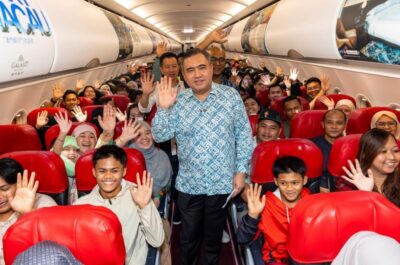
AirAsia launches first late-night fixed fare flights for Hari Raya to Miri

Flipkart expands into bus bookings, offering 10 lakh connections

HKTB to launch regular pyrotechnic and drone shows for festivals

Thailand’s tourism sector witnesses remarkable growth in 2023, ushers in new year with revenue surge

Thailand’s tourism sector soared in 2023, welcoming over 28 million foreign tourists and generating 1.2 trillion baht, with a 44% revenue surge during the New Year period.
Bangkok, Thailand – The Thai tourism industry has demonstrated a remarkable rebound in 2023, with the latest figures presented by Ms. Sudawan Wangsuphakijkosol , the Thai Minister of Tourism and Sports, indicating a significant influx of foreign tourists and a substantial increase in tourism revenue.
Surge in Foreign Tourist Arrivals
In 2023, Thailand welcomed over 28 million international visitors, generating an impressive income of more than 1.2 trillion baht. The primary contributors to this influx were Malaysia, China, South Korea, India, and Russia, with Malaysian tourists leading the pack.
However, a notable shift was observed in the final week of December 2023. Despite a slight 0.9% decrease in foreign tourist numbers compared to the preceding week, there was an increase in tourists from specific regions, particularly during the New Year celebrations and winter holidays.
Key Statistics and Trends
Top Five Source Countries: Malaysia (4,563,020 tourists), China (3,519,735 tourists), South Korea (1,658,688 tourists), India (1,626,720 tourists), and Russia (1,481,878 tourists). Weekly Fluctuations: The number of Russian and Chinese tourists increased by 12.84% and 4.95%, respectively, while the number of Malaysian, Korean, and Indian tourists saw a decrease.
A 44% Increase in Tourism Revenue
As the new year commenced, Thailand’s tourism revenue saw a remarkable 44% surge, attributed largely to the visa-free scheme and extended entertainment hours in key tourist areas. Thapanee Kiatphaiboon , Governor of the Tourism Authority of Thailand (TAT), highlighted that from December 22 to January 1, the country earned a staggering 54.4 billion baht (US$1,588,321,152), marking a significant year-on-year increase.
Boost in Visitor Expenditure and Domestic Travel
International Visitors: Thailand hosted 1.1 million visitors during this period, with their expenditure totaling approximately 41.7 billion baht (US$1,217,518,236). Domestic Travel: There was also an uptick in domestic travel, with Thais embarking on about 3.76 million domestic trips, contributing 12.7 billion baht (US$370,802,916) to the economy.
Celebratory Events and Hotel Occupancy
The TAT collaborated with various partners to host new year celebrations across several provinces. These events attracted 1.11 million domestic visitors and generated 4.7 billion baht (US$ 137,226,276) in revenue. Notably, hotel occupancy rates soared to an average of 82%, with Bangkok, Nakhon Ratchasima, and Chiang Mai being the most popular destinations.
Forward Outlook
The start of 2024 sets a promising precedent for Thailand’s tourism industry, a vital contributor to the nation’s economy. With initiatives like the visa-free scheme and extended entertainment hours, the TAT remains optimistic about sustaining this growth trajectory in 2024.

Theodore Koumelis
Theodore is the Co-Founder and Managing Editor of TravelDailyNews Media Network; his responsibilities include business development and planning for TravelDailyNews long-term opportunities.
- Theodore Koumelis https://www.traveldailynews.asia/author/theodore-koumelis/ Hotel101 Global det for US NASDAQ listing through merger
- Theodore Koumelis https://www.traveldailynews.asia/author/theodore-koumelis/ HKTB to launch regular pyrotechnic and drone shows for festivals
- Theodore Koumelis https://www.traveldailynews.asia/author/theodore-koumelis/ Kuala Lumpur Convention Centre unveils revamped meeting space
- Theodore Koumelis https://www.traveldailynews.asia/author/theodore-koumelis/ Luneta Park transforms into Filipino Fiesta food haven
Related posts

Bangkok tops global tourism charts with vibrant festivities and accolades

MICHELIN Guide Thailand expands to Chon Buri: A culinary adventure by the sea

Thailand’s Vision 2025: A multifaceted approach to ignite tourism

Fusion Hotel Group launches first Fusion Suites in Thailand
Previous article, next article, vietnam sets target of 17-18 million international visitors in 2024, air india set to link bhuj with mumbai.

Direct Mumbai to Tashkent flight launched, boosting India-Uzbekistan ties

Wyndham expands in Vietnam with first hotel in Hai Duong

Air India welcomes new Head of Global Airport Operations

Revitalizing global tourism through rail: A sustainable journey

Kuala Lumpur Convention Centre unveils revamped meeting space

Emirates expands flight schedule for Eid Al Fitr holidays

RCI launches first Cruise Exchange Program in India

Radisson expands with ‘Guan Xin’ for Chinese travelers in EMEA

Maldives’ tourism revenue dips, shifts to guesthouses
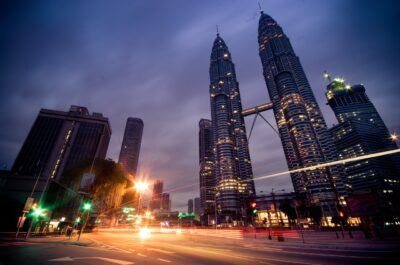
Destination Explore partners with TA Network for digital revolution

Luneta Park transforms into Filipino Fiesta food haven

Trip.com launched free Shanghai layover city tours

TFWA Asia Pacific Exhibition and Conference: Global retail giants gather

Sarawak enhances tourism through premier pickleball tournament

Harnessing AI for Business and Life: Insights from Prof. Pin Pin

ATPCO welcomes Ritchie Ramsamy as the new APAC Regional Director

AirAsia X launches direct Kuala Lumpur-Xi’an flight with full capacity

Cordis, Foshan: New upscale hotel opens in China’s Greater Bay Area

HoSkar Bangkok

Surge in Eid travelers at Tanjung Perak Port, Surabaya
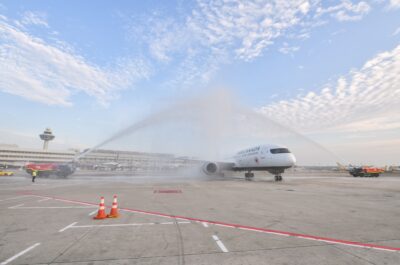
Air Canada launches non-stop Singapore to Vancouver route

Travelex launches click-and-collect currency service in Hong Kong

Indonesia implements strict airfare regulation ahead of Eid exodus

Philippines and Austria strengthen tourism ties for mutual growth

IHG announces second voco property in Seoul, expanding in South Korea
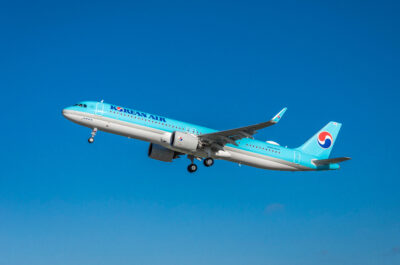
Korean Air launches seasonal flights to Taichung from Seoul

Indonesia enhances tourist safety with evacuation zones for Eid holidays

Changshu launches culture and tourism festival with Peony celebrations

Pallavi Sharma appointed as the new Front Office Manager at Novotel Hyderabad

Thai AirAsia launches new direct flights from Bangkok to Okinawa

Taiwan’s strongest earthquake in 25 years shakes the travel industry

Philippines eyes sustained tourism growth, gits 1.2m international visitors in early 2024


Juneyao Air launches first direct Shanghai to Athens flight, expanding global reach

ICC Sydney launches Disability Inclusion Action Plan on World Autism Awareness Day

Alipay+ connects two million merchants in Japan, bolstering cherry blossom season

Mahindra Aerostructures and Airbus Atlantic ink $100m contract
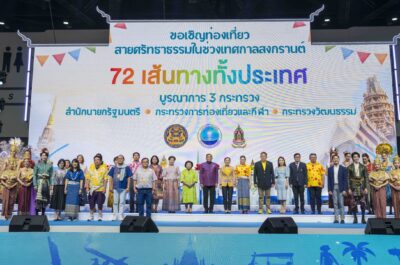
Bangkok launches Maha Songkran World Water Festival 2024 for Thai New Year

China Southern Airlines launched new Beijing Daxing-Macao flight route

Radisson Hotel Group debuts first Radisson RED in Laos
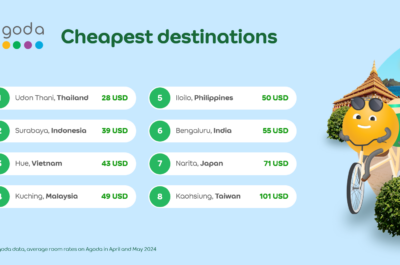
Agoda reveals Asia’s cheapest destinations for upcoming holidays
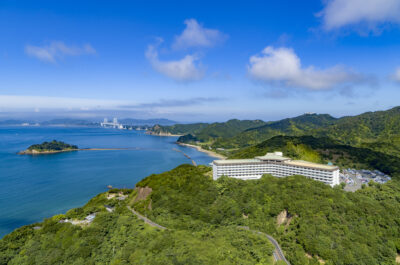
Accor doubles presence in Japan with 22 new hotels opening

New $6 million funding boost for Indigenous Tourism in the Northern Territory

The Isan Project launches ‘Flowers of Thailand’ video, encouraging tourists to discover Thailand’s hidden gems

ONYX Hospitality Group expands Shama Brand with new launch in Rayong

TAT launches ‘Air-mazing Thailand’ to boost the country as Asia-Pacific aviation hub

Ascott Limited’s Strategic Vision for Tourism Growth in the Philippines: Insights from Loven Ramos

Club Med hosts first global event in Lijiang, showcasing China’s rich culture and scenic beauty

Trip.com Group and Capital A Berhad forge expanded partnership, enhancing travel offerings
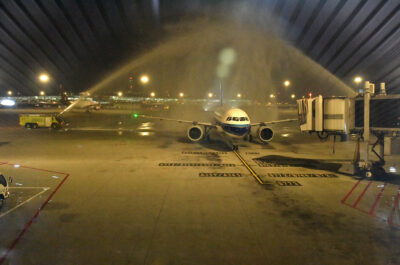
Malaysia welcomes new direct flights from Chengdu and Shenzhen, aims to boost Chinese tourism

Pedals and Pathways: Unveiling the Rise of Cycling Tourism in Southeast Asia
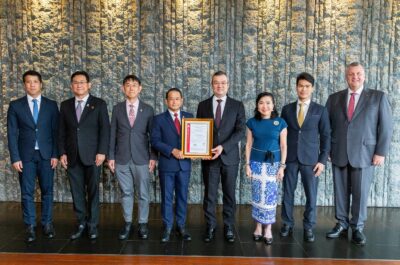
Centara Hotels and Resorts earns GSTC certification for sustainable tourism

Live Webinar: Climate Change Impact on Destination Reputation
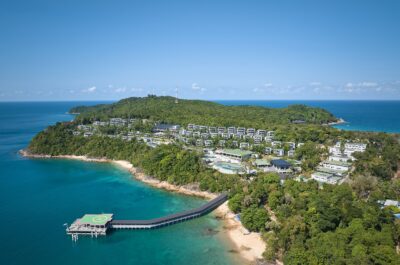
Perhentian Marriott Resort opens in Malaysia’s Terengganu
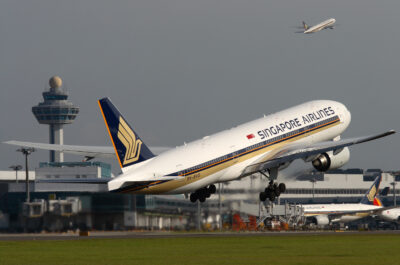
Singapore Airlines restores full service at Perth with four daily flights

Preferred Hotels & Resorts bolsters South Asia team with strategic sales appointments
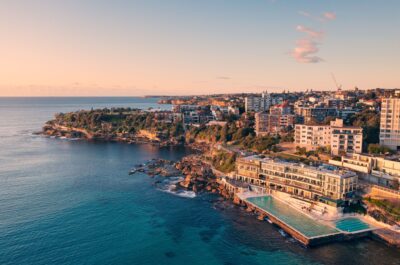
NSW shatters tourism records with $51.4 billion visitor contribution in 2023

Mercure Hyderabad KCP welcomes Suraj Kumar Gupta as the new Front Office Manager

PATA now accepting submissions for prestigious “Face of the Future Award” 2024
Tourism industry in Thailand
Statistics report about tourism industry in Thailand
This report presents graphs and tables about the tourism industry in Thailand. It provides an overview of the tourism industry, as well as an economic impact, tourist flows, and the tourist perspectives in Thailand.
Download your Report
Table of contents.
- Premium Statistic Value of tourism GDP Thailand 2017-2021
- Basic Statistic Number of quarterly foreign visitors Thailand Q1 2021-Q4 2022
- Premium Statistic Number of local tourists Thailand 2023
- Premium Statistic Size of employment in tourism sector Thailand 2017-2021
Economic impact
- Premium Statistic Direct contribution of tourism to gross domestic product Thailand 2017-2021
- Premium Statistic Indirect contribution of tourism to gross domestic product Thailand 2017-2021
- Premium Statistic Value of tourism tax Thailand 2017-2021
- Premium Statistic International tourist arrivals revenue Thailand 2023
- Premium Statistic Local tourists revenue Thailand 2023
- Premium Statistic Tourism receipts from international visitors Thailand 2020, by region of origin
- Premium Statistic Number of international visitors Thailand 2023, by region of origin
- Premium Statistic Number of foreign visitors Thailand 2023, by region
- Premium Statistic Revenue generated from foreign visitors Thailand 2023, by region
- Premium Statistic Number of traveling locals Thailand 2023, by region
- Premium Statistic Revenue generated from traveling locals Thailand 2023, by region
Accommodation
- Premium Statistic Share of foreign visitors to total guests of accommodations Thailand 2015-2022
- Premium Statistic Share of foreign visitors to total guests of accommodations Thailand 2022, by region
- Premium Statistic Advance reservation rate of accommodations Thailand 2015-2022
- Premium Statistic ADR of accommodations Thailand 2015-2022
- Premium Statistic Popular accommodations for Thais when travelling Thailand Q2 2021
Tourist perspectives
- Premium Statistic Estimated CI in tourism industry Thailand Q1 2023, by type of business
- Premium Statistic Opinions on lifted COVID-19 restrictions on eagerness to travel Thailand 2022
- Premium Statistic Opinions on public tourism promotions on eagerness to travel Thailand 2022
- Premium Statistic Main reasons of not wanting to travel Thailand 2022
- Premium Statistic Chosen transportations for traveling Thailand 2022
- Premium Statistic Main worries when travelling Thailand 2022
If this report contains a copyright violation , please let us know. Note that you will leave this page when you click the link.
Recommended and recent reports
Recommended statistics.
- Premium Statistic Market size of the tourism sector worldwide 2011-2024
- Premium Statistic Total number of people employed in the tourism sector New Zealand 2014-2023
- Premium Statistic Tourism industry direct contribution as share of GDP Malaysia 2013-2022
- Premium Statistic Tourism industry employee count in the U.S. 2012-2022
- Premium Statistic Number of employees in tourism industry Malaysia 2013-2022
Statista report shop
We provide information on industries, companies, consumers, trends, countries, and politics, covering the latest and most important issues in a condensed format.
Mon - Fri, 9am - 6pm (EST)
Mon - Fri, 9am - 5pm (SGT)
Mon - Fri, 10:00am - 6:00pm (JST)
Mon - Fri, 9:30am - 5pm (GMT)
- Immediate access to all reports
- Access to all Premium statistics
- Usage and publication rights
Thailand Re-Emerges as the Ultimate Tourist Hotspot: Skift Travel Health Index
Saniya Zanpure , Skift
January 24th, 2024 at 10:30 AM EST
Thailand has taken the lead in Skift's Travel Health Index. Growth has been fueled by elevated pricing and strategic visa waivers.
Saniya Zanpure
Our latest Skift Travel Health Index , shows that the global Travel Health Index stood at 102 in December 2023, capping a big year for the global travel industry.
Thailand was the big winner. It finished with an index score of 101, up 7 percentage points over the previous month.
With challenges rising from the sluggish rebound of Chinese outbound travel, Thailand has strategically steered its tourism sector. The government’s initiative to temporarily waive visa requirements for key inbound markets has proven instrumental in the country’s resurgence as the most popular tourist hotspot.
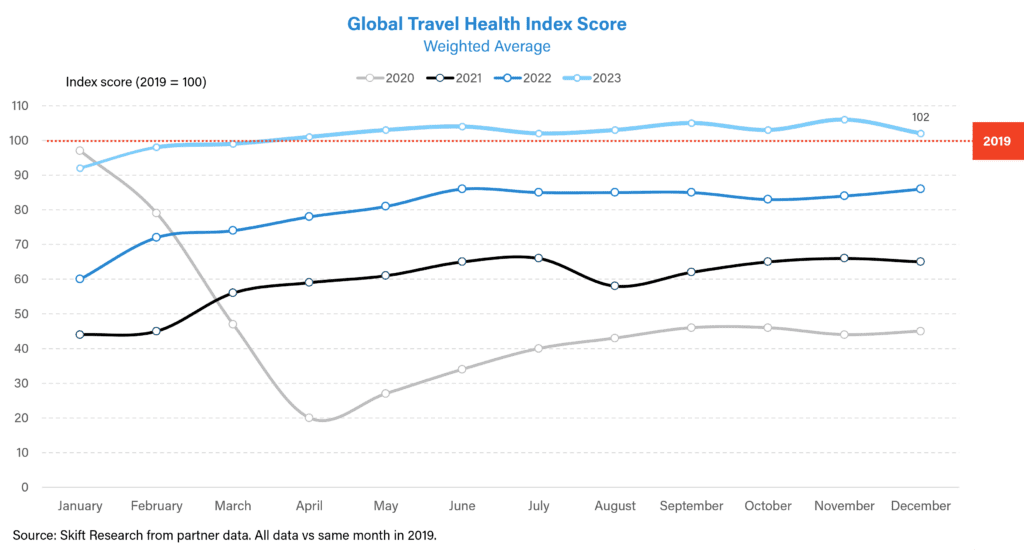
Despite meeting arrival targets, the projected income from these visitors is still short of the set target . A peak into the pricing dynamics as analyzed in the December 2023 Highlights shows that overall, a trip to Thailand has become significantly more expensive than it used to be.
Moving into 2024, Thailand has set ambitious targets, actively exploring measures to ease travel to the country. This reflects the country’s commitment to revitalize tourism, which is a key driver of its economy.
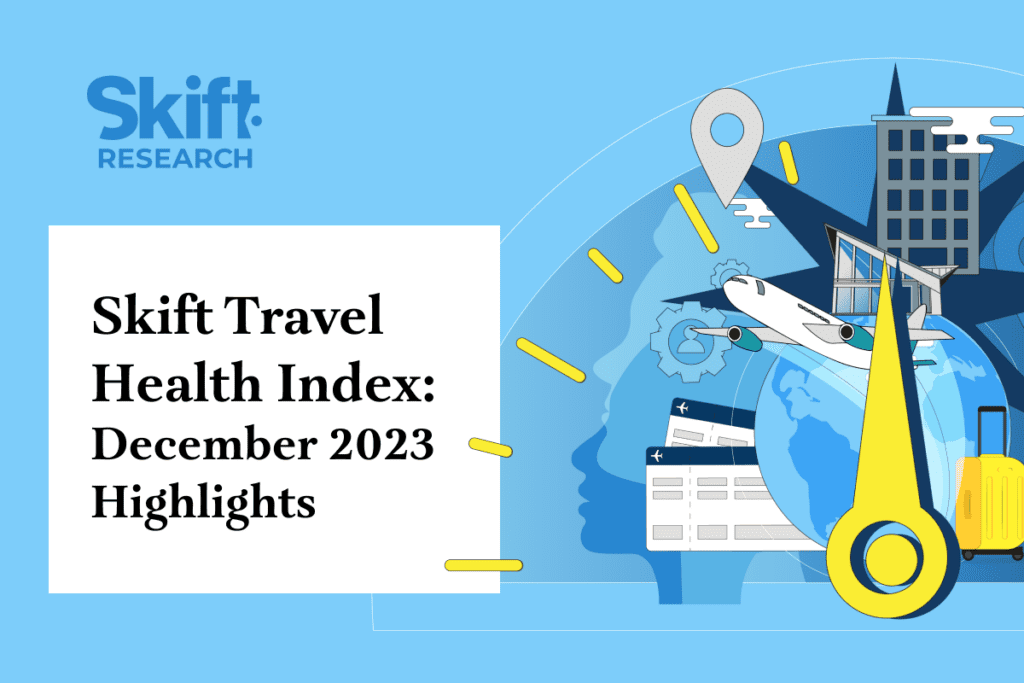
The Daily Newsletter
Our daily coverage of the global travel industry. Written by editors and analysts from across Skift’s brands.
Have a confidential tip for Skift? Get in touch
Tags: pricing , recovery , thailand , tourism authority of thailand
Thailand’s Economy Remains Resilient amid Global Headwinds
BANGKOK, December 14, 2022 – Thailand’s economy is projected to recover to its pre-pandemic level in 2022, but the pace of growth will be slower-than-expected in 2023 owing to global headwinds. The economy is projected to expand by 3.4 percent in 2022 and 3.6 percent in 2023. Growth in 2023 has been revised down by 0.7 percentage point compared to June projections reflecting faster-than-expected decline in global demand. Tourism sector recovery and private consumption will remain the major drivers of growth.
The Thailand Economic Monitor for December 2022: Fiscal Policy for a Resilient and Equitable Future , released today, finds that the Thai economy has shown resilience to recent global shocks. Economic growth accelerated to 4.5 percent in the third quarter of this year fueled by resurgent private consumption and strong tourism inflows following economic reopening in May and the authorities’ measures to mitigate cost-of-living pressures. Tourism arrivals reached 45 percent of the pre-pandemic level in September, surpassing those in Indonesia and the Philippines.
Most recently, Thailand experienced a significant slowdown in exports growth like other ASEAN peers, reflecting the impact of the global economic slowdown. Exports of goods are expected to contract by 2.1 percent in 2023, a sharp decline from the estimated expansion of 8.1 percent in 2022. This downward revision reflects weakening demand from the major trading partners, including China, the European Union, and the US.
“As Thailand looks towards resuming its path towards high-income country status post-pandemic, raising adequate fiscal space will be necessary to meet the additional spending need and provide a fiscal buffer for future shocks,” said Fabrizio Zarcone, World Bank Country Manager for Thailand .
According to the report, Thailand’s fiscal response to COVID-19 significantly mitigated the impact of the crisis on household welfare. Poverty is, however, projected to rise to 6.6 percent in 2022 from 6.3 percent in 2021 as the COVID-19 relief measures start to be phased out amid elevated inflation. Additional shocks, including a renewed spike in energy prices, may further erode fiscal space unless more targeted and cost-effective social assistance measures are introduced.
“The current crisis serves as an impetus to undertake much-needed structural reforms required to improve the quality and allocation of spending as well as to raise structurally low revenue,” said Kiatipong Ariyapruchya, Senior Economist for Thailand at the World Bank . “Meeting the spending need, while also improving distributional impacts of fiscal policies and undergoing fiscal consolidation, requires more efficient and targeted spending and further effort on revenue mobilization.
The report recommends improving jobs and earnings opportunities among low-income groups, while creating fiscal space to achieve adequate spending on social assistance for the most vulnerable groups including elderly, disabled and extreme poor people. Financing the necessary public investments in physical and digital infrastructure and human capital to promote growth and human development in the longer term will also be critical for achieving sustainable poverty reduction.
This site uses cookies to optimize functionality and give you the best possible experience. If you continue to navigate this website beyond this page, cookies will be placed on your browser. To learn more about cookies, click here .
Customer Logins
Obtain the data you need to make the most informed decisions by accessing our extensive portfolio of information, analytics, and expertise. Sign in to the product or service center of your choice.
- S&P Dow Jones Indices
- S&P Global Market Intelligence
- S&P Global Mobility
- S&P Global Commodity Insights
- S&P Global Ratings
- S&P Global Sustainable1
- Investor Relations Overview
- Investor Presentations
- Investor Fact Book
- News Releases
- Quarterly Earnings
- SEC Filings & Reports
- Executive Committee
- Corporate Governance
- Merger Information
- Stock & Dividends
- Shareholder Services
- Contact Investor Relations
- Email Subscription Center
- Media Center

Thailand’s economic outlook for 2023 boosted by rising tourism inflows

Executive Director and Asia-Pacific Chief Economist, S&P Global Market Intelligence
Thailand has shown a gradual economic recovery from the COVID-19 pandemic during 2022, helped by rising international tourism arrivals. Real GDP growth rose from 1.5% in 2021 to 2.6% in 2022, with growth momentum expected to strengthen further in 2023. Due to the importance of international tourism for the Thai economy, the strong rebound in international tourism inflows evident in the first half of 2023 signals that the tourism economy will be a key growth driver in 2023.
S&P Global Thailand Manufacturing PMI survey results during the first half of 2023 have continued to show expansionary conditions for manufacturing output and new orders.
Thailand's economic recovery from pandemic
The Thai economy has shown an upturn in economic growth momentum in early 2023, with first quarter GDP growth up by 2.7% year-on-year (y/y), compared with 1.4% y/y growth in the fourth quarter of 2022.
The upturn in the first quarter growth rate was underpinned by rapid growth in private consumption, which rose by 5.4% y/y, helped by surging international tourism arrivals. Expenditure on services rose by 11.1% y/y due to buoyant spending in hotels and restaurants. However private investment grew at a modest pace of just 2.6% y/y, while public investment grew by 4.7% y/y.
Thailand's annual GDP growth rate in 2022 was quite moderate in comparison with other large ASEAN economies such as Malaysia, Vietnam and Philippines, which posted very high growth rates as they rebounded from the pandemic. Thailand recorded real GDP growth of 2.6% in 2022, representing a relatively modest pace of economic recovery from the recessionary conditions caused by the COVID-19 pandemic.
A key driver for improving economic growth in 2022 was the recovery of private consumption, which grew by 6.3%, compared with just 0.6% y/y growth in 2021. Private investment growth also improved from a pace of 3.0% in 2021 to 5.1% in 2022. However public investment contracted by 4.9% in 2022, while government consumption was flat.
Strong growth in private consumption and investment as well as rising energy import prices helped to boost import growth, which rose by 15.3% in 2022, while exports rose by just 5.5%, measured in USD terms. Consequently, the merchandise trade surplus narrowed from USD 32.4 billion in 2021 to USD 10.8 billion in 2022. With global headwinds to exports from weak economic conditions in key markets, Thai merchandise exports fell by 5.1% y/y in the first five months of 2023, with exports of industrial products having declined by 5.4% y/y while exports of agricultural and processed agricultural products fell by 1.3% y/y.
Due to the important contribution of international tourism to Thailand's GDP, a key factor that constrained the rate of recovery of the Thai economy in 2022 was the slow pace of reopening of international tourism, although this gathered momentum in the second half of 2022. Weak tourism exports due to the pandemic were a key factor contributing to large current account deficits of USD 10.6 billion in 2021 and USD 17.4 billion in 2022, compared with a pre-pandemic current account surplus of 38.3 billion. However, the gradual recovery of international tourism flows have resulted in the current account returning to a small surplus of USD 431 million in the fourth quarter of 2022, strengthening sharply to a surplus of USD 3.5 billion in the first quarter of 2023.
The S&P Global Thailand Manufacturing PMI has shown sustained expansionary conditions in Thai manufacturing during the first half of 2023. However, the latest PMI survey showed some moderation from very strong expansionary readings of 60.4 in April and 58.2 in May to 53.2 in June. However, the June PMI stayed well above the 50.0 no-change mark and signalled continued solid expansion of the manufacturing sector for the eighteenth consecutive month. New orders rose for a third straight month in June, albeit again at a slower rate than April's record. As a result of solid demand growth, manufacturing production continued to expand in June. The pace of growth further eased from the April record, in line with new orders, but remained strong by historical standards.
Supply-side improvements helped to keep price pressures subdued in June as input costs increased at one of the slowest rates in two years. In turn, manufacturers passed on the rise in prices, stemming from higher raw material and shipping costs in the form of higher charges. However, the increase was the slowest since August 2021.
Thailand's headline CPI inflation rate slowed to just 0.2% y/y in June 2023, compared with 2.7% y/y in April 2023 and 7.9% y/y in August 2022. The Monetary Policy Committee (MPC) of the Bank of Thailand decided to raise the policy rate by 0.25% from 1.25% to 1.50% at their monetary policy meeting on 25 January 2023, with a further 0.25% rate hike implemented on 29 March 2023 and another 0.25% rate hike on 31 May, bringing the policy rate to 2.0%. The tightening moves in the first half of 2023 follow three 25 basis points (bps) rate hikes by the MPC in 2022, with the MPC having decided to increase the policy rate by 25 bps each in August, September and November. In their May 2023 monetary policy meeting, the MPC assessed that average CPI inflation was projected to decline to 2.5% in 2023 and 2.4% in 2024.
Recovery of international tourism sector
International tourism was a key part of Thailand's GDP prior to the COVID-19 pandemic, contributing an estimated 11.5% of GDP in 2019. However, foreign tourism visits collapsed after April 2020 as many international borders worldwide were closed, including Thailand's own restrictions on foreign visitors.
As COVID-19 border restrictions were gradually relaxed in Thailand and also in many of Thailand's largest tourism source countries during 2022, international tourism showed a significant improvement during the second half of the year. The number of international tourist arrivals reached 11.15 million in 2022, compared with just 430,000 in 2021. However, the total number of visits was still far below the 2019 peak of 39.8 million, indicating considerable scope for further rapid growth in the tourism sector during 2023.
International tourism arrivals in the first quarter of 2023 surged to 6.5 million visitors, which was more than half the total number of international tourists visits in 2022. Total tourism receipts in the first quarter for both domestic and international tourism spending was estimated at 499 billion baht, up by 127% y/y. The Tourism Authority of Thailand has increased its estimated target for international tourism visits in 2023 to 25 million, which is more than double the total number of international tourism arrivals in 2022. In April, international tourist arrivals were estimated at 2.2 million, remaining on track for the government's targeted annual tourism arrivals for 2023.
Thailand economic outlook
Despite the upturn in private consumption and international tourism arrivals in 2022, the overall pace of economic expansion was relatively moderate, at just 2.6%. Easing of pandemic-related travel restrictions during 2022 has also allowed a gradual reopening of domestic and international tourism travel, which gathered momentum in the second half of 2022.
With more normal conditions expected for international tourism travel in 2023, this should provide a significant boost to the economy. Due to the importance of tourism inflows from mainland China prior to the pandemic, the reopening of mainland China's international borders will be an important factor contributing to the further recovery of Thailand's tourism market.
Helped by the continued recovery of the international tourism sector, some upturn in GDP growth to a pace of around 3.5% is expected in 2023.
Over the next decade Thailand's economy is forecast to continue to grow at a steady pace, with total GDP increasing from USD 500 billion in 2022 to USD 860 billion in 2032. A key driver will be rapid growth in private consumption spending, buoyed by rapidly rising urban household incomes.
The international tourism sector will continue to be a dynamic part of Thailand economy, buoyed by rapidly rising tourism arrivals the populous Asian emerging markets, notably mainland China, India and Indonesia.
By 2036, Thailand is forecast to become one of the Asia-Pacific region's one trillion-dollar economies, joining mainland China, Japan, India, South Korea, Australia, Taiwan, Philippines and Indonesia in this grouping of the largest economies in APAC. The substantial expansion in the size of Thailand's economy is also expected to drive rapidly rising per capita GDP, from USD 6,900 in 2022 to USD 11,900 by 2032. This will help to underpin the growth of Thailand's domestic consumer market, supporting the expansion of the manufacturing and service sector industries.
However, rising per capita GDP levels will also put pressures on Thailand's competitiveness in certain segments of its manufacturing export industry. Therefore, an important policy priority for nation will be to continue to transform manufacturing export industries towards higher value-added processing in advanced manufacturing industries.
One of the key economic and social challenges facing Thailand is its rapidly ageing population, which will result in a rising burden of health care and social welfare costs over the next two decades. This will be a drag on Thailand's long-term potential growth rate, making investment in technology and innovation increasingly important to mitigate the economic impact of demographic ageing.
Rajiv Biswas, Asia Pacific Chief Economist, S&P Global Market Intelligence
© 2023, S&P Global Inc. All rights reserved. Reproduction in whole or in part without permission is prohibited.
Purchasing Managers' Index™ (PMI™) data are compiled by IHS Markit for more than 40 economies worldwide. The monthly data are derived from surveys of senior executives at private sector companies, and are available only via subscription. The PMI dataset features a headline number, which indicates the overall health of an economy, and sub-indices, which provide insights into other key economic drivers such as GDP, inflation, exports, capacity utilization, employment and inventories. The PMI data are used by financial and corporate professionals to better understand where economies and markets are headed, and to uncover opportunities.
Purchasing Managers' Index™ (PMI ® ) data are compiled by S&P Global for more than 40 economies worldwide. The monthly data are derived from surveys of senior executives at private sector companies, and are available only via subscription. The PMI dataset features a headline number, which indicates the overall health of an economy, and sub-indices, which provide insights into other key economic drivers such as GDP, inflation, exports, capacity utilization, employment and inventories. The PMI data are used by financial and corporate professionals to better understand where economies and markets are headed, and to uncover opportunities.
Learn more about PMI data
Request a demo
This article was published by S&P Global Market Intelligence and not by S&P Global Ratings, which is a separately managed division of S&P Global.
UK recruiters signal coolest pay growth for over three years in March
Global trade near-stabilises at the end of first quarter
Emerging markets activity expands at fastest pace in ten months
We've detected unusual activity from your computer network
To continue, please click the box below to let us know you're not a robot.
Why did this happen?
Please make sure your browser supports JavaScript and cookies and that you are not blocking them from loading. For more information you can review our Terms of Service and Cookie Policy .
For inquiries related to this message please contact our support team and provide the reference ID below.
- Appointments
- Corporate Connect
- Discover Your India
- Explore the world
- Food Voyager
- Hotels & Resorts
- Lifestyle, Weddings & Wellness
- Today's Traveller Awards
- Today's Traveller Interviews

- Today’s Traveller Awards
- Today’s Traveller Interviews
The Tourism Authority of Thailand (TAT) announces 2024 strategic direction
The tourism authority of thailand (tat) has announced the 2024 strategic direction that will continue to elevate the tourism supply and sustainable standards, as well as leverage thai soft powers to promote and develop high-value and sustainable tourism in thailand..
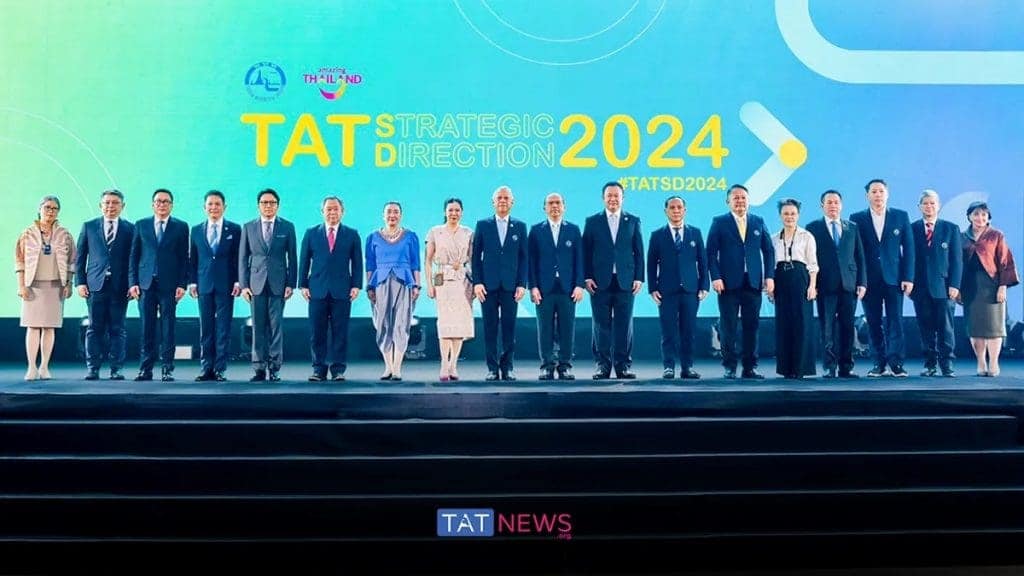
According to Yuthasak Supasorn, Tourism Authority of Thailand (TAT) Governor: “2024 will be the year of accelerating resilience, transforming Thailand’s tourism into High Value and Sustainable Tourism that emphasises on elevating and moving forward to a better tourism ecosystem. To build a new ecosystem, we need to become less reliant on the number of tourists and focus more on increasing tourist spending, attracting quality tourists, developing the supply chain with our partners, and distributing income fairly to the local communities. We need to create a balance between economic wealth, social well-being, environmental wellness, and human wisdom.”
To strengthen the country’s tourism industry, the Tourism Authority of Thailand (TAT) is committed to building tourism security with long-term immunity, so that the industry can face global polycrisis and keep moving forward.
The 4 key factors to create tourism security are:
- Strengthen the supply chain with quality and sustainability to cater to the rising demand and distribute income to the local community fairly.
- Develop factors supporting tourism and tourism infrastructure to create safe and smooth travel.
- Leverage digital transformation through innovation and technology to create value-added and sustainability in the tourism industry.
- Focus on external risk management effectively.
Elaborating on the initiative, Thapanee Kiatphaibool, Tourism Authority of Thailand (TAT) Deputy Governor for Domestic Marketing, said: “Tourism Authority of Thailand (TAT) will continue to focus on creating and delivering ‘meaningful experiences’ to quality travellers with different demands in tourism experiences. To achieve this, TAT is concerned about the subculture movement and will strengthen partnerships at all angles with stakeholders and suppliers to drive Thailand’s tourism industry towards sustainability.”
International Market
For the international market, five directions have been devised to boost the overseas market-
- Enhance the sustainability image of Thailand and utilise it as the country’s unique selling point, which aims to strengthen the awareness of the Kinnaree Brand (Thailand Tourism Awards) to international travellers
- Penetrate emerging quality markets to focus on new markets in Europe and the Middle East region and other potential segments, such as Oya Rich, business travellers, and weddings and honeymoon
- Seek new partners and expand collaboration with global partners, such as Tourism Cares, Alipay, and WeChat
- Promote overland travelling via the high-speed train between the People’s Republic of China-Lao PDR-Thailand
- Empower marketing with digital content, such as utilising virtual influencers to promote Thailand to Generation Z and Y to Thailand
Domestic Market
The domestic market promotion will be prioritised on stimulating Thais to travel in Thailand, increasing travel frequency, and distributing tourism income to the local communities, so as to generate income for all sectors equally. TAT will also showcase the strengths of Thailand Soft Power (5F) and highlight meaningful travel experiences across all five regions of Thailand:
- The ‘Northern Region’ invokes nostalgia through local arts and crafts and the soft power of the North
- The ‘Central Region’ highlights the happiness of travelling through 4HD or the 4 Happy Definitions, which aim to stimulate frequent travel in the Central Region
- The ‘Northeastern Region’ leverages the fabulous Isan food and the Michelin Guide to whet the domestic travel appetite to the Northeast
- The ‘Eastern Region’ highlights gastronomic delights, local beliefs, getaway destinations, and responsible tourism in the East
- The ‘Southern Region’ recommends an exciting array of food, nature, superstitions, and work from anywhere in the South
For marketing communication in 2024, the Amazing Thailand brand is being implemented for both the domestic and international markets. ‘Create Your Great Moment Now’ is the key concept, which is being conveyed to domestic tourists, while the ‘Meaningful Relationship’ is being communicated to international travellers to encourage them to engage in meaningful connections with the local people and community.
By synergising with the private sector, the Tourism Authority of Thailand (TAT) will strengthen Thailand’s five soft powers under the Brand Collaboration: Amazing Thailand x 5F project.
“With the carefully planned 2024 strategic direction, the Tourism Authority of Thailand (TAT) has set an overall revenue target in the best-case scenario of 3 trillion Baht. This constitutes 1.92 trillion Baht from international tourism and 1.08 trillion Baht from domestic tourism. TAT expects to welcome 35 million foreign tourists and inspire 200 million domestic trips in 2024,” Thapanee concluded.
Read more: News
Our Social Presence

- Discover India
- Hotels & Resorts
- Lifestyle, Weddings & wellness
- Todays Traveller awards
- Todays Traveller Interviews
Quick Links
Our social networks.
- Account details
- Lost password

- Real Estate
- Media OutReach Newswire
- PR Newswire
- Submit a Press Release

- Press Releases
Global Travel & Tourism sector to reach record-breaking economic contribution in 2024
- The sector is expected to generate unprecedented job numbers, with an increase of more than 13.6 million jobs compared to its highest point in 2019, highlighting its pivotal role in global employment.

In 2024, the World Travel & Tourism Council (WTTC) predicts that the global economic contribution of the Travel & Tourism sector will reach a record-breaking $11.1 trillion, with an additional $770BN over its previous record.
Key Takeaways
- The global Travel & Tourism sector is projected to reach a record-breaking economic contribution of $11.1 trillion in 2024, showcasing its resilience and significance in the global economy.
- Despite challenges, the sector is poised for robust growth in the next decade, with a forecasted contribution of $16 trillion to the global economy by 2034, promising prosperity and innovation on an unprecedented scale.
This growth is expected to generate unprecedented job opportunities, with the sector set to support almost 348MN jobs globally. Despite challenges, the sector has shown resilience, matching its pre-pandemic levels in 2023 and is projected to break records in 2024.
Looking ahead, WTTC forecasts continued robust growth, predicting a global economic impact of $16TN by 2034 and creating employment for 449MN people worldwide. However, concerns remain about the slow return of international tourist spend in the U.S. and China, and the need for support from their respective governments.
About the author

Daniel Lorenzzo
- Daniel Lorenzzo https://www.thailand-business-news.com/author/dlorenzzo Moody's affirms Bangkok Bank's Baa1 ratings with a stable outlook
- Daniel Lorenzzo https://www.thailand-business-news.com/author/dlorenzzo The Ongoing Crisis of Soaring Household Debt in Thailand
- Daniel Lorenzzo https://www.thailand-business-news.com/author/dlorenzzo Thailand's airlines return to profitability amidst tourism revival
- Daniel Lorenzzo https://www.thailand-business-news.com/author/dlorenzzo Thematic Investment Opportunities in Thailand Amid Global Risks
Related Posts
What should your first business trip to london look like, thailand’s airlines return to profitability amidst tourism revival, thailand and china “visa-free era” begins, thailand plans to double suvarnabhumi airport’s capacity to 150 million passengers, china implements new regulations to streamline cross-border data transfers, thailand’s cannabis rush: a budding opportunity amidst regulatory changes.

How Agoda and Airbnb are Revolutionizing the Hospitality Industry in Thailand
Suvarnabhumi airport to increase capacity with third runway in july.

Thailand's Cannabis Rush: A Budding Opportunity Amidst Regulatory Changes
Latest news, 中国作为政策巨头的谬论.

即将发布的《2025 年泰国米其林指南》将纳入春武里府
日本劳动法改革中司机们陷入困境.

2024年泼水节世界泼水节正式启动
What other people are reading.
Subscribe notifications via Email
Enter your email address to subscribe and receive notifications of new posts by email.
Email Address
- Advertising
- Community Standards
- Cookie Policy
- Cryptocurrencies and Digital Asset Laws in Thailand
- Internships
- Investment in Thailand
- Privacy Policy
- Terms of Use
- Thailand Business Visa
© 2023 Thailand Business News
Welcome Back!
Login to your account below
Remember Me
Create New Account!
Fill the forms below to register
Retrieve your password
Please enter your username or email address to reset your password.
Are you sure want to unlock this post?
Are you sure want to cancel subscription.
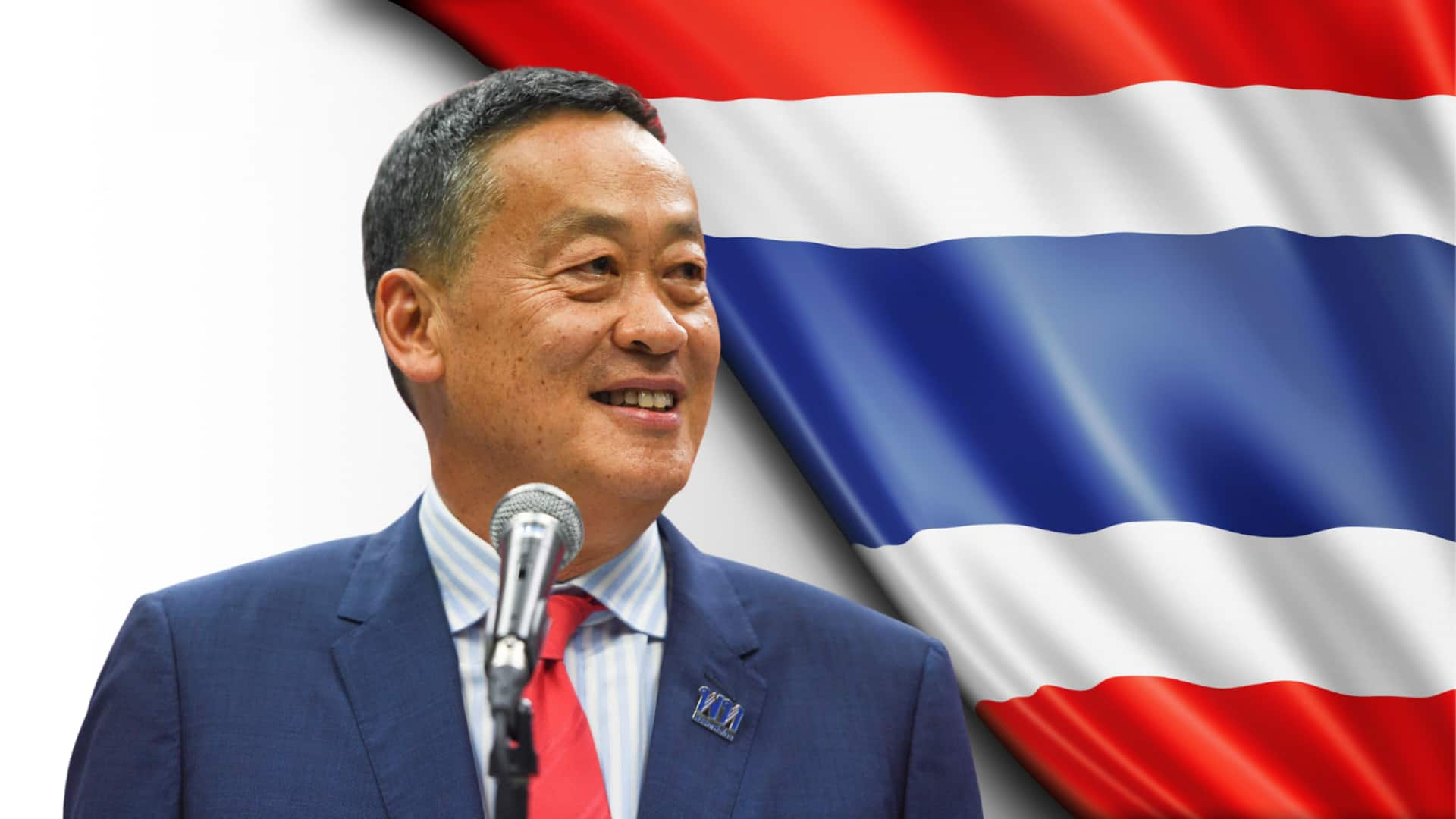
Thailand proposes Schengen-style visa to boost tourism: Know its significance
Thailand 's Prime Minister, Srettha Thavisin, is leading discussions with Southeast Asian nations including Cambodia, Malaysia , Myanmar, Laos, and Vietnam. The talks revolve around the potential introduction of a visa system akin to the Schengen model—a joint-visa program permitting free travel around the border-free zone (Schengen area) as long as it's valid. The aim is to simplify travel for tourists across the six countries. The collective visa initiative forms part of Thavisin's broader strategy to attract more long-distance and high-spending tourists.
What is a Schengen visa?
A Schengen visa is a temporary authorization permitting travelers to enter the Schengen area for a maximum of 90 days within a span of 180 days. It enables travelers to move within the Schengen area and pass through the territories of Schengen states. Additionally, the visa can facilitate transit through the international transit zones of Schengen state airports. For those unaware, Schengen Area encompasses 29 European countries where border controls have been eliminated. It spans over four million square kilometers.
Regional leaders respond positively to unified visa proposal
The unified visa proposal has been well received by regional leaders. The primary objective of this initiative is to increase revenue per visitor, and protect Thailand's economy from challenges such as slow exports and reduced global demand. These issues have significantly impacted the nation's manufacturing sector. In 2023, these six Southeast Asian nations collectively attracted approximately 70 million tourists. Thailand and Malaysia contributed to more than half of the total count, generating an estimated $48 billion in tourism revenue.
Tourism sector's significant role in Thailand's economy
The single visa initiative is a bold move in Thavisin's suite of tourism strategies. The tourism sector provides approximately 20% of all jobs in Thailand, and contributes about 12% to the country's $500 billion economy. Marisa Sukosol Nunbhakdi, a former president of the Thai Hotels Association, expressed her optimism about the proposal, stating, "A common visa could entice long-haul travelers to make an easier decision."
Challenges in implementing Schengen-style visa
The execution of a Schengen-style visa could face difficulties due to the Association of Southeast Asian Nations (ASEAN) 's history of slow progress in implementing multilateral policy frameworks. Thitinan Pongsudhirak, a professor at Chulalongkorn University's political science faculty, pointed out that the lack of uniform immigration criteria among the participating nations could present obstacles. He also suggested that Thavisin, being a political novice, may not have the necessary influence to drive the visa proposal forward.
New Normal for the Tourism Industry in 2024: Rethinking and Relaunching
Since the beginning of 2023, Japan, Thailand, and other countries have relaxed their entry restrictions, leading to a surge in Hong Kong residents traveling abroad due to herd mentality.They flocked to Japan for shopping and indulged in hot springs.
However, after this initial wave, the enthusiasm for outbound travel cooled down slightly, and domestic tourism gained momentum.
Will Mainland Chinese tourists no longer flock to Hong Kong? Before the pandemic, mainland Chinese tourists significantly drove local consumption, and receiving mainland tour groups was a major source of income for many jewelry, gold, and high-end dried seafood stores.
Although the borders between the two regions have now reopened, businesses have reported that the influx of mainland Chinese tourists to Hong Kong is not as high as expected.
According to media reports, during the recent "Golden Week" holiday, the number of mainland Chinese tourists entering Hong Kong dropped by nearly 40% compared to pre-pandemic levels.
Additionally, the fluctuation in the exchange rate between the Chinese yuan and Hong Kong dollar has made tourists more conservative in their spending. The previous trend of lavish buying and purchasing luxury brands has diminished.
As consumer habits change, the itineraries of visitors to Hong Kong have also changed significantly. There is a rise in low-cost or free activities, such as taking photos at MTR stations, street signs, or in front of old police stations, as well as visiting Wong Tai Sin Temple and treasure hunting in Sham Shui Po.
Mainland Chinese online platforms even provide guides on "How to Spend a Day in Hong Kong for HKD 100," reflecting that extravagant shopping tours from mainland China are no longer the mainstream.
Emphasis on attracting local visitors It is evident that the trend of Hong Kong residents traveling to mainland China for consumption has been increasing rather than decreasing in recent months, especially during holidays.
A popular choice is a three-day-two-night trip to popular commercial districts, where people can enjoy various dining, entertainment, and recreational activities.
For example, the "Guangzhou R&F Ski World" covers an area of approximately 75,000 square meters and offers skiing and snow activities throughout the year. They also offer skiing instructor courses and exams certified by the Canadian Association of Snowboard Instructors/Canadian Ski Instructors' Alliance, attracting skiing enthusiasts of different levels.
Consequently, there is an increased demand for private car hire services between Shenzhen and Hong Kong, providing seamless travel itineraries, accommodation arrangements, and point-to-point transportation to cater to the needs of families.
When the overall environment cannot be changed, it is crucial for the tourism industry to upgrade its services and avoid simply adjusting and relaunching outdated tour packages. It is recommended to first understand the industry trends and develop attractive services targeting the desired customer base.
There are various forms of business collaborations, and it is advisable to seek the advice of professional accountants to tailor the most ideal tax planning strategies.With the right people and the right actions, everyone can become an expert .
WhatsApp & Wechat: (852) 5236 2580
Website: http://www.maxi-solution.com/
Wordpress: https://maxisolution.wordpress.com
#tourism #new normal #Japan #Thailand #herd mentality #hot spring #travel #golden week #photo taking # Guangzhou Ski #shopping tour #private car hire #CPA #tax #tax filing #tax #accounting #Maxi #limited company #unlimited company
Most popular
Stay up to date with business go.
Subscribe to our newsletter to obtain latest articles, events and offers that are tailored to you

IMAGES
COMMENTS
Indirect contribution of the tourism industry to the gross domestic product (GDP) in Thailand from 2017 to 2021 (in billion Thai baht) Premium Statistic Value of tourism tax Thailand 2017-2021
Thailand's tourism industry, once a beacon of economic prosperity, has experienced a rollercoaster of highs and lows. The late 1980s and early 1990s marked an era of unprecedented growth, with the country becoming a must-visit destination for travellers worldwide. However, this boom was not without its consequences.
Thailand's economy is reliant on international tourism, a once-flourishing sector that has been impacted by pandemic restrictions. But there have been continual government efforts to boost domestic travel, and measures to support returning international demand after Thailand began reopening to vaccinated international travelers from 63 countries on November 1, 2021. 1 Pasika Khernamnuoy and ...
Recovery of international tourism sector. International tourism was a key part of Thailand's GDP prior to the COVID-19 pandemic, contributing an estimated 11.5% of GDP in 2019. However, foreign tourism visits collapsed after April 2020 as many international borders worldwide were closed, including Thailand's own restrictions on foreign visitors.
Despite the strong recovery so far, Thailand's tourism industry is still a long way from the pre‑covid levels when annual arrivals regularly exceeded 30m. The total number of arrivals in January-August this year is only 17% of that in the same period in 2019. The composition of arrivals by nationality sheds light on the cause of the weakness.
The COVID-19 pandemic severely impacted the tourism industry in Thailand, with tourist arrivals dropping by 83.2% in 2020 to 6.7 million, and revenue falling to 332 billion baht (approximately 10.7 billion US dollars). The top five source markets for Thailand's tourism industry are China, Malaysia, India, South Korea, and Japan.
Thailand's tourism industry imploded during COVID-19, which saw international tourist numbers fall from more than 40 million in 2019, the last full year before the pandemic, to 6.7 million in ...
Thailand's tourism sector soared in 2023, welcoming over 28 million foreign tourists and generating 1.2 trillion baht, with a 44% revenue surge during the New Year period. Bangkok, Thailand - The Thai tourism industry has demonstrated a remarkable rebound in 2023, ...
Thailand's retail inflation rate in June jumped 7.66% from a year earlier, a 14-year high, boosted by surging energy costs. For the year, the government forecasts a consumer-price jump of 6.2% ...
Tourism is an economic contributor to the Kingdom of Thailand. Estimates of tourism revenue directly contributing to the GDP of 12 trillion baht range from one trillion baht (2013) 2.53 trillion baht (2016), the equivalent of 9% to 17.7% of GDP. [1] [2] When including indirect travel and tourism receipts, the 2014 total is estimated to be the ...
For an economy whose staple is travel, Thailand's tourism industry is taking a major hit amid the COVID-19 pandemic. Tourism is a major economic contributor to Thailand, with tourist receipts accounting for 11.5% of GDP in 2019, more than doubling from 5.2% in 2009. In addition, Chinese tourists account for the lion share of tourist arrivals, clocking 27.5% in 2019, followed by Malaysia (10. ...
The official site of Tourism Authority of Thailand. Amazing Thailand, Travel information, Travel guide, maps, hotels, accommodation, attractions, events & festivals, food, culture, shopping information to help you plan your Thailand vacations.
International tourists spent 1.9 trillion baht ($54 billion) in Thailand in 2019, and the industry has typically accounted for about 12% of the country's gross domestic product, according to ...
Visions & Missions. Organize chart. Board of TAT. Executive of TAT. Policy & Marketing Plan. TAT Informative. TAT History. Operation Reports. Financial Audit Reports.
Value of tourism GDP Thailand 2017-2021. Basic Statistic. Number of quarterly foreign visitors Thailand Q1 2021-Q4 2022. Premium Statistic. Number of local tourists Thailand 2023. Premium ...
With challenges rising from the sluggish rebound of Chinese outbound travel, Thailand has strategically steered its tourism sector. The government's initiative to temporarily waive visa ...
Tourism sector recovery and private consumption will remain the major drivers of growth. The Thailand Economic Monitor for December 2022: Fiscal Policy for a Resilient and Equitable Future, released today, finds that the Thai economy has shown resilience to recent global shocks. Economic growth accelerated to 4.5 percent in the third quarter of ...
Thailand has shown a gradual economic recovery from the COVID-19 pandemic during 2022, helped by rising international tourism arrivals. Real GDP growth rose from 1.5% in 2021 to 2.6% in 2022, with ...
Recovery of international tourism sector. International tourism was a key part of Thailand's GDP prior to the COVID-19 pandemic, contributing an estimated 11.5% of GDP in 2019. However, foreign tourism visits collapsed after April 2020 as many international borders worldwide were closed, including Thailand's own restrictions on foreign visitors.
Tourism. Thailand's economy relies heavily on tourism. In 2019, tourism accounted for approximately 11% of Thailand's GDP, and around 20% of Thais were employed in the sector, according to the ...
The six Southeast Asian nations reported a combined 70 million foreign tourist arrivals in 2023, according to official data. Thailand and Malaysia accounted for more than half of the tally ...
Thailand experienced a remarkable tourism boom in the first quarter of 2024, with the arrival of 9.37 million international tourists, a hefty 44% surge compared to the same period in 2023. The Tourism and Sports Ministry's announcement in April, revealed this significant increase, attributing it to the influx of visitors from various parts of the globe.
By synergising with the private sector, the Tourism Authority of Thailand (TAT) will strengthen Thailand's five soft powers under the Brand Collaboration: Amazing Thailand x 5F project. "With the carefully planned 2024 strategic direction, the Tourism Authority of Thailand (TAT) has set an overall revenue target in the best-case scenario of ...
Thailand recorded 9.4 million foreign tourists in the first three months of this year, who contributed an estimated 454.6 billion baht ($12.4 billion) to the economy in spending, the tourism ministry said on Tuesday. Thailand is targeting a record of 40 million tourists this year, a figure close to that of pre-pandemic 2019. — Reporting by ...
The global Travel & Tourism sector is projected to reach a record-breaking economic contribution of $11.1 trillion in 2024, showcasing its resilience and significance in the global economy. The sector is expected to generate unprecedented job numbers, with an increase of more than 13.6 million jobs compared to its highest point in 2019 ...
The single visa initiative is a bold move in Thavisin's suite of tourism strategies. The tourism sector provides approximately 20% of all jobs in Thailand, and contributes about 12% to the country ...
When the Covid-19 pandemic erupted, Thailand's hospitality industry had the rug pulled out from under it more calamitously than most other markets. In 2019, Thailand was the world's eighth ...
When the overall environment cannot be changed, it is crucial for the tourism industry to upgrade its services and avoid simply adjusting and relaunching outdated tour packages. It is recommended to first understand the industry trends and develop attractive services targeting the desired customer base. There are various forms of business ...